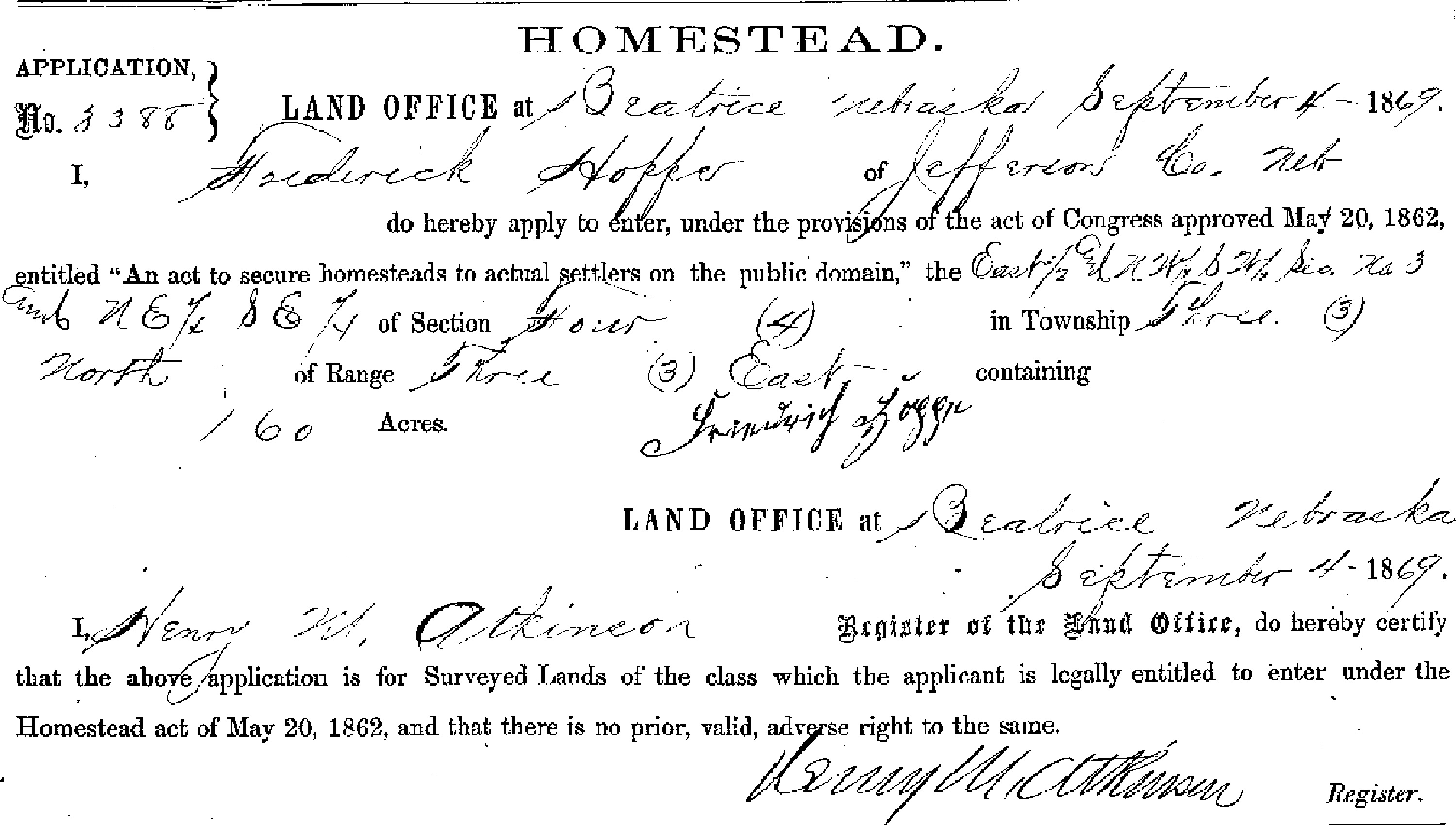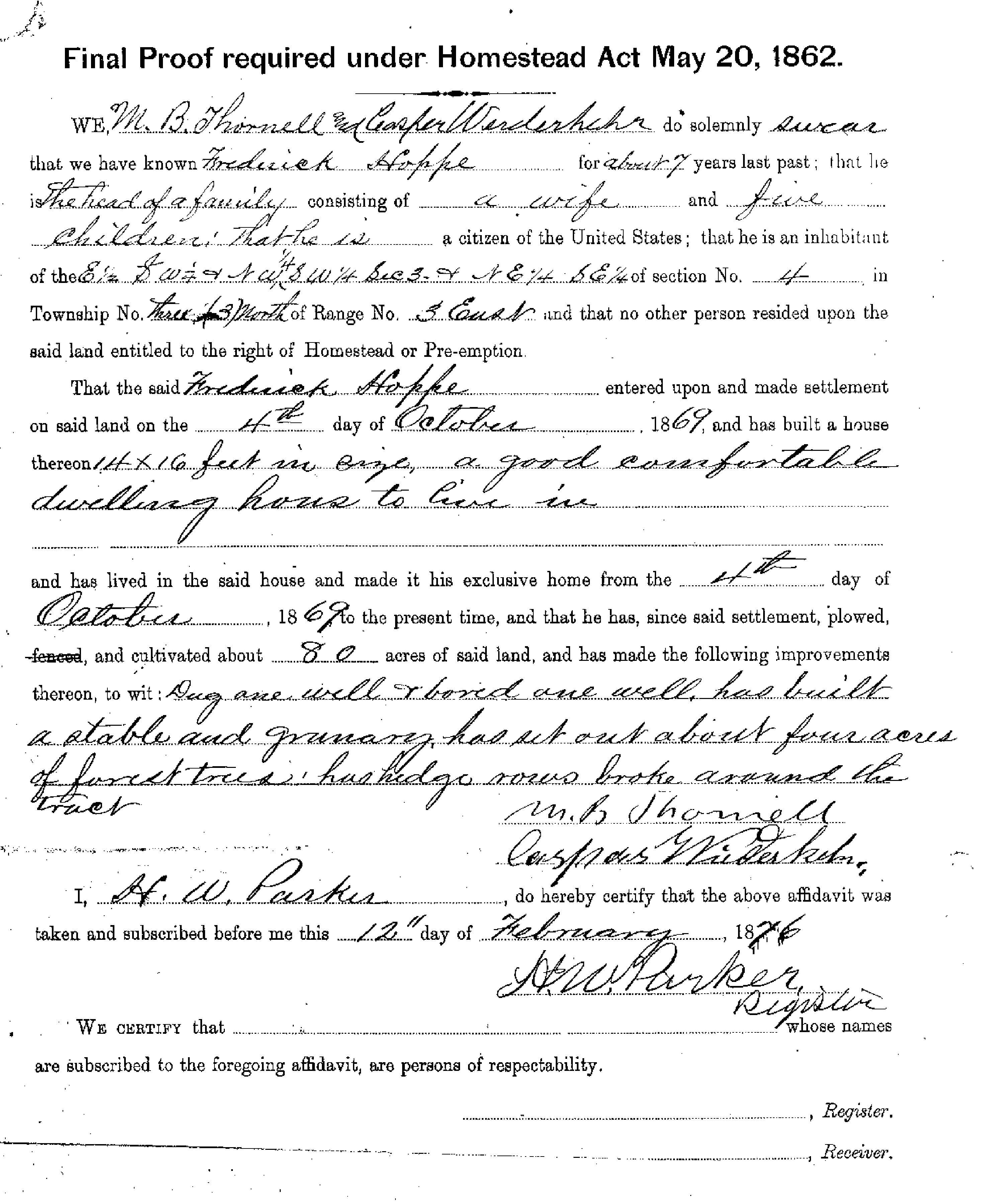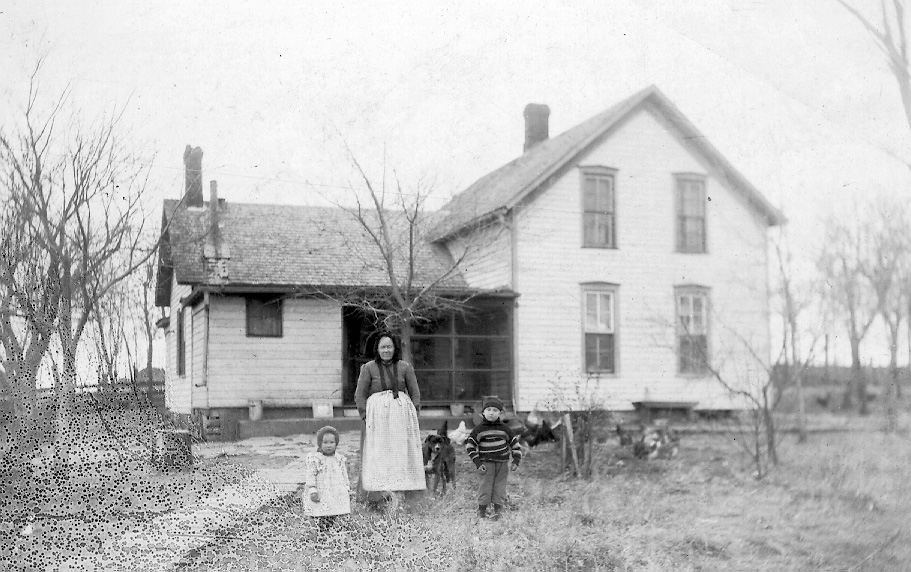THE NEBRASKA HOMESTEAD
The United States Homestead Act of 1862 opened land in the public domain (land owned by the federal government) to anyone who was either the head of a family, 21 years old, or a veteran of 14 days of active service in the U.S. armed forces, and who was a citizen or had filed a declaration of intent to become a citizen.
Daniel Freeman (1826-1908) and his family of Nebraska, were the first to make a claim under the act on January 1, 1863, when the law went into effect. Homestead National Monument of America, northwest of Beatrice, Nebraska now encompasses the original site on the banks of Cub Creek in Gage County.
Settlement of the newly opened lands in the Nebraska Territory began in the east and spread westward. On March 1, 1867 Nebraska became the thirty-seventh state of the United States.
Nebraska City was a city that developed early and played a major role in the settlement of the territory. It was a jumping off point for overland travelers who came by train from the east or by boat up the Missouri River. It also was a center for shipping military supplies by wagon across the plains to the various forts along the Platte River.
In 1869 the city of Fairbury was founded and in 1871 established as the county seat of Jefferson County along the north bank of the Little Blue River. Northeast of the townsite ran the Oregon Trail, a major overland route of travel from 1843 to the 1870’s. Rock Creek Station, a Pony Express, overland stage and emigrant station was located a few miles southeast of Fairbury.
Three days after arriving in Beatrice on September 1, 1869, H. F. C. filed for a homestead located on Cub Creek in Jefferson County, about fifteen miles upstream from the Daniel Freeman homestead.

Homestead Application of H.F.C. Hoppe
National Archives
A copy of his application is shown above. The entire homestead file may be downloaded here (8.5MB, PDF). Following is an account by his daughter, Louise, of the first few months on the homestead:
We had two friends, boys. They had taken homesteads, they wanted my Dad to be close to them, so Dad went to look at it, so the 4th of September he homesteaded 4 miles north of Jansen and the 12th of October we moved on it. Just the logs were layed, no roof. Dad went to Nebraska City to buy stove, a few chairs and what we had to have to cook with, in the lumber wagon and ox team, took 2 days. A blizzard came, so he had to take 3 days. Here we were in this open log house. We had 2 bachelors near, George Fillmore and Mr. Mitter. The one evening we stayed they came and said there is a prairie fire coming, they came with ox and plowed and plowed around the house and set fire to the out. It was eleven o’clock when they had burned all around our house. So we went to bed on the ground, the next morning we were all covered with snow. At ten o’clock my Dad got home with stove and the other things. So he put up stove, stove pipe went over top of logs, started a fire, was we happy to have a little heat. Our roof was made of sod, laid over sticks of wood and closed the side of the logs with mud. All the rest of our buildings were made with sod. Barns 12’ wide and 30’ long, 1 chicken coup and hog barn.
We got our flour from old Meridian from Mr. Weisel mill. In April my Dad went to Marysville, Kansas to get shingles, boards to make a floor, so things got a little better every day.
To acquire title to the land, the homesteader was obliged to settle on or cultivate the homestead for five years, after which he had to file an affidavit called "Final Proof." This affidavit described the improvements made to the land.
The Final Proof of the homestead was filed by H. F. C. on February 12, 1876, as shown below. Note that in America he used the name Frederick. The legal description of the land was the East½ and NW¼SW¼ Section 3 and NE¼SE¼ Section 4 in Township 3 North of Range 3 East containing 160 acres.

Homestead Application of H.F.C. Hoppe
National Archives
Improvements described on H. F. C.’s Final Proof included: "..built a house 14 feet by 16 feet in size, a good comfortable dwelling house to live in, cultivated 80 acres of land, dug one well and bored one well, built a stable and granary, set out about four acres of forest trees and broke hedge rows around the tract."
A second house was built to replace the original log house, probably around 1880. The second house no longer stands and is shown in the picture below.

Sophie Hoppe and grandchildren Alma and Arthur Sellenrick
in front of house on Hoppe homestead. 1902
Copyright © 1998 by Weldon Hoppe